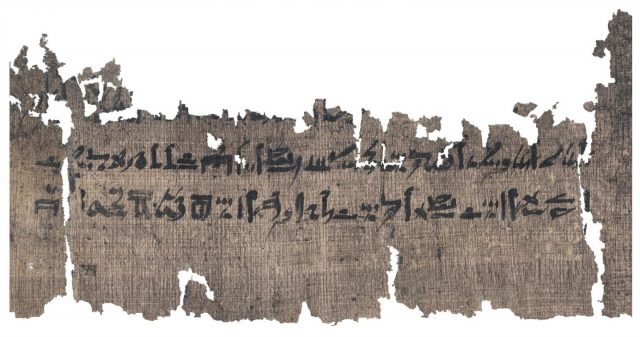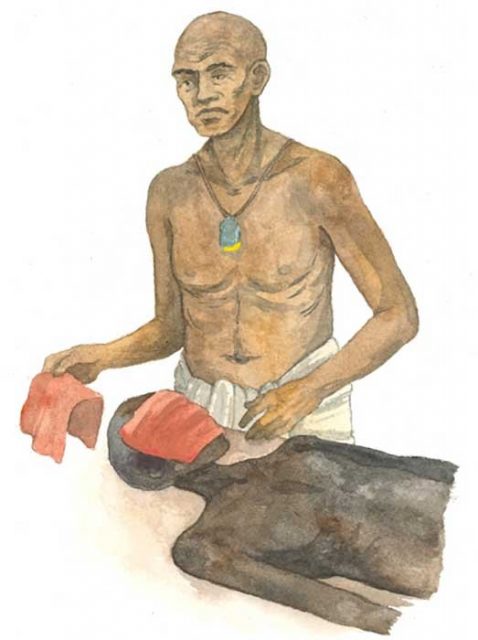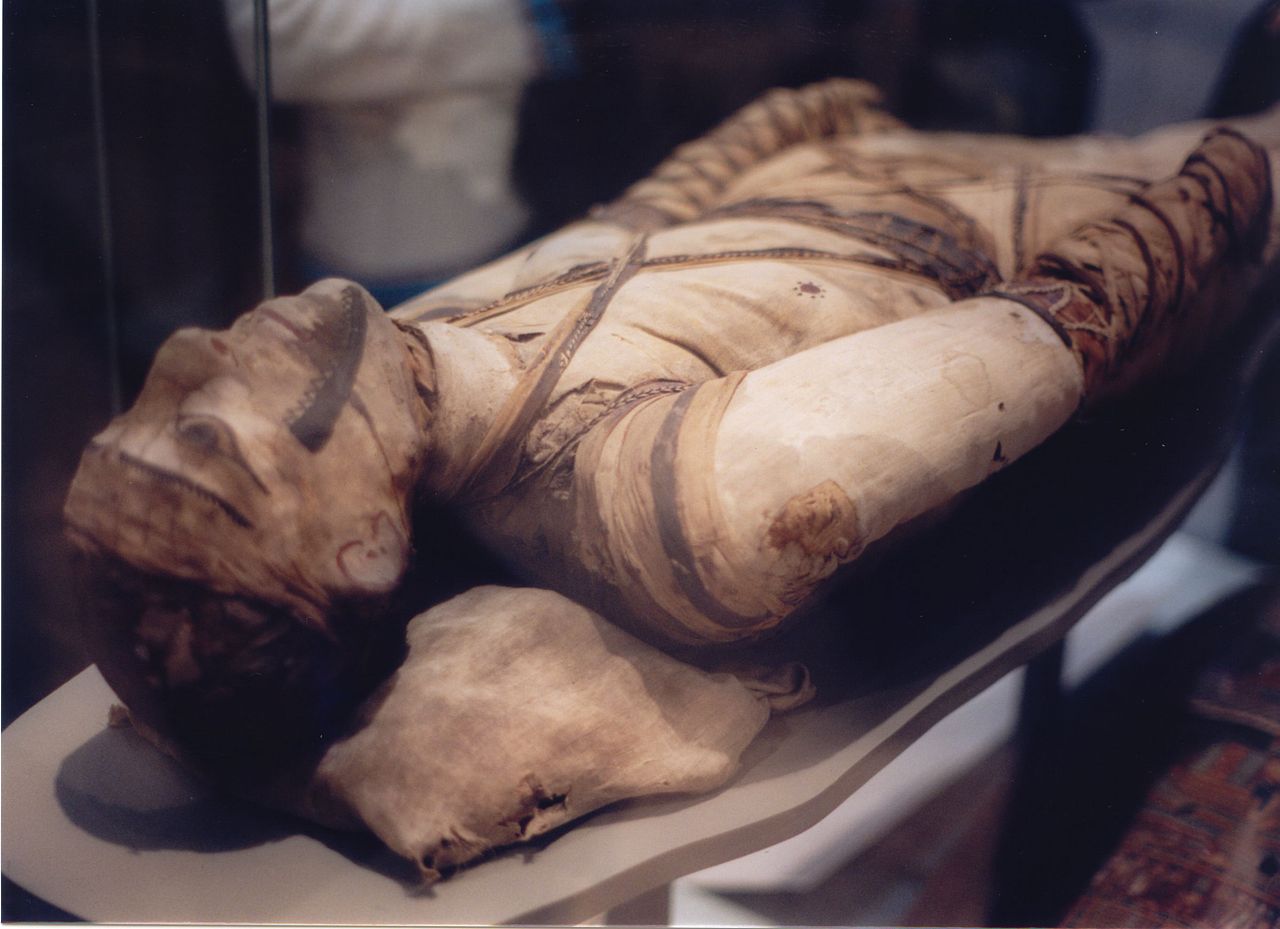The faces of the dead in Ancient Egypt were specially treated with gloopy red linen before being mummified and buried. An Egyptologist writing her PhD discovered a short manual inside the Papyrus Louvre-Carlsberg outlining these elaborate steps.
The incomplete and decrepit document from approx 3,500 years ago is the second longest medical papyrus ever found. It’s estimated the papyrus was an impressive 19 ft long in total.
And now it’s revealed a face-saving secret! Experts never knew about this part of the process before.
Egyptologist Dr Sofie Schiødt, from the University of Copenhagen, studied the pearl of ancient wisdom. Quoted by the University’s website, she believes it “reads like a memory aid”, aimed at giving the experienced embalmer’s memory a jolt.
Red linen was soaked in a liquid cooked up from “plant-based aromatic substances and binders”, as reported by the Daily Mail. When applied to the face, this concoction would “encase it in a protective cocoon of fragrant and anti-bacterial matter”, according to the University.

Not only did it apparently avoid facial swelling, it was recommended for deterring insects. Plus, it wasn’t a one off. The Ancient Egyptian facial had to be repeated every 4 days, part of the entire mummification ritual.
It was only part of a lengthy series of actions and rituals that reportedly covered 17 processions, enabling people to pay respects to the body during different phases. All in all, 70 days were set aside, comprised of a 35 day drying schedule and another 35 for wrapping as described by Science Alert.
Dr Schiødt’s work, yet to be published, throws new light on a very familiar but deeply mysterious chapter of the history books.
The Papyrus Louvre-Carlsberg, which exists in 2 “halves”, takes its name from the places it can be found. Most famous of these is the Louvre Museum in Paris. The section of the papyrus there has already been examined, writes Science Alert.
Treatises exploring herbal treatments and skin problems form a substantial part of the papyrus, which was translated in 2018. A fuller interpretation is on the way in 2022.
Over at the second location of the Carlsberg Collection (University of Copenhagen), further details are adding to the picture. Mummies from the period appear to bear the hallmarks of what the papyrus describes.
The Papyrus Louvre-Carlsberg is over a thousand years older than the 2 texts previously relied upon for mummified titbits. As Ancient Origins mentions, the work of Greek historian Herodotus became a vital reference point.
For such an important process, not much exists detailing how it worked. The University of Copenhagen writes the practices were “probably passed on orally”.
Ancient Origins write about the well-known procedure of removing organs, including the icky yet essential business of accessing the brain via the nose. Workers would then “sterilize the chest and abdominal cavities”.
The deceased went on to take a bath of sorts, a “salty fluid containing a mixture of soda ash and sodium bicarbonate.” This emptied the body of fluids and keep decay at bay.

Ultimately the goal was to give the individual a send off to the afterlife, equipped with everything they needed for the journey.
The latest instructions from the papyrus contributes to an eye-opening amount of information that’s come to light about the Land of the Pharaohs. At the Saqqara Tomb south of Cairo numerous discoveries have unveiled ancient secrets like never before.
Egypt’s tourism industry has suffered as a result of the pandemic, so these revelations have helped draw attention to the popular destination.
The papyrus will play a role identifying “which ailments were thought to be the work of which gods, and how they could be combated” writes Science Alert.
Another Article From Us: Lizzie Borden House Set to Be Sold for Millions
Modern day medicine has its own significant challenges. To gain an insight into how the dead were treated thousands of years ago is a reminder of how things were very different, but no less methodical…
